本文转载自公众号如何设计工作室,未经授权不得二次转载
随着人工智能的快速发展,机器学习的应用,尤其是基于神经网络的机器学习,如同雨后春笋一般。建筑学作为技术的末端应用,终于加入了AI家族,建筑师们热衷于应用或开发不同类型的神经网络来解决设计问题。本文简要介绍了四种主要用于建筑设计的监督神经网络,
卷积神经网络(CNN)映射图像到向量,
生成对抗网络(GAN)映射图像到图像,
人工神经网络(ANN)映射向量到向量,
循环神经网络(RNN)将有序向量映射到向量,
以及用于聚类的无监督机器学习算法。然后通过分析人工智能在建筑设计中的最新研究和未来展望,介绍各大会议中(ACADIA2017,ACADIA2018,CAADRIA2018,eCAADe2018,IASS2018,RobArch2018)重要的相关论文,展示了应用实例及其工作原理。当人工智能成为强大的学习和生成机器时,它是否将取代人类成为新建筑师?
在深入研究每个神经网络的工作原理和每篇论文的细节之前,这里我们先简要介绍所有相关的论文列表。相比于按照他们使用的网络类型进行分类,我们先根据研究的目标分类,方便大家搜索文章最后的参考列表快速锁定文献。碍于篇幅,我们不会对每篇文章都做介绍(其实英文版已经写好了只是都翻译过来太烦。。。所以这里只挑了比较成功的重要的来仔细讲)。我们按照设计认知,设计生成,辅助工具将文献分为三个类别。
对于设计认知,研究的目的是学习设计数据并将网络应用于设计的认知或理解。主题包括,提取设计中的关键特征,如 (Kvochick 2018)(Kim, Song, and Lee 2018)(WANG and KAWAGUCHI 2018)(Peng, Zhang, and Nagakura 2017)(Newton 2018)(Sjoberg, Beorkrem, and Ellinger 2017)(Song et al. 2018)(Chang et al. 2018),计算环境评估数据,如(Zhang et al. 2018)(Chung and Jeng 2018),校准机械臂和3D打印机的工作路径,如(Bard, Bidgoli, and Chi 2018),分类或评估设计,如(FUHRIMANN et al. 2018)(Yetiş et al. 2018),在设计中理解人类行为,如 (Hu and Park 2017)(Lin and Huang 2017)(Lin and Huang 2018)(Yin et al. 2018)。
对于设计生成,建筑师主要使用神经网络用于生成与训练数据相似的设计方案。主题包括,生成设计图纸或模型,如(Huang and Zheng 2018)(Zheng and Huang 2018)(Zheng 2018)(Bidgoli and Veloso 2018)(WANG et al. 2018)(DANHAIVE and MUELLER 2018)(Koehler et al. 2018)(Luo, Wang, and Xu 2018),生成机械臂和3D打印或激光切割的工作路径,如(Rossi and Nicholas 2018)(Brugnaro and Hanna 2018)(Danesh, Baghi, and Kalantari 2018)。
对于辅助工具,研究的目标是为对机器学习了解有限的设计人员构建框架和插件,帮助建筑师在设计领域快速应用神经网络。论文包括(Steinfeld 2017),介绍CNN的一般知识,(Cutellic 2018)构建脑机接口框架,(Xu et al. 2018),构建控制人脑α波的工具,(Khean et al. 2018)在Grasshopper中编写机器学习插件。
好了我们进入正题吧!
一、CNN
首先,卷积神经网络(CNN)是最常用的图像处理网络,其将设计数据认知为2D像素化图像或3D体素化模型(3D CNN)。 只要输入数据可以表示为2D或3D矩阵并且输出数据可以表示为向量(或向量集合),我们就可以使用它,因此大多数与提取设计中的关键特征的工作都是基于CNN。
比如,当输出数据包含多个神经元时,网络可以预测图像中的多种特征。(Kim, Song, and Lee 2018)训练CNN来识别建筑家具的图像及其特征参数,例如材料和可以容纳的人数(图2-2-1)。例如,通过向神经网络输入椅子的照片,网络将反馈一系列参数,告诉用户家具的预测特征。
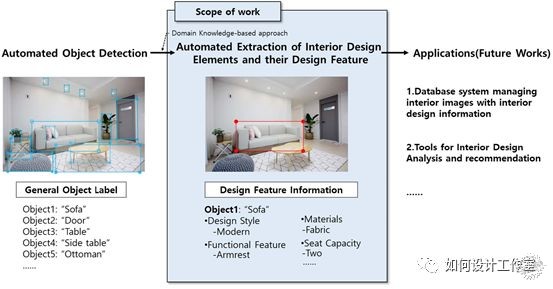
Figure 2-2-1. Scope of work for automated extraction of interior design elements and their design features by (Kim, Song, and Lee 2018).
CNN还有可能与机械臂协同工作。(Bard, Bidgoli, and Chi 2018) 通过捕捉实时图像并将其输入网络来检机械臂测制造时的缺陷。机器人抹灰工具头首先在墙上抹灰。然后将相机和投影仪的校准工具头连接到机械臂上,用于拍摄墙壁照片,然后将图像发送到网络,最后将缺陷区域投射到墙壁上(图2-2-2),这样用户可以清楚地看到抹灰的质量,并进一步调整机械臂的工具路径,以纠正这些缺陷。

Figure 2-2-2. Feedback-loop highlights on the finished surface (Left: scanning area, Center: camera/projector calibration, right: projected results, highlighting fail regions) by (Bard, Bidgoli, and Chi 2018).
CNN不仅可以处理2D矩阵,还可以通过3D卷积核进行3D矩阵运算,我们称之为3D CNN。(Newton 2018)应用3D CNN将建筑根据形状特征分类。基于三种建筑的类型,扁平的,蜂窝状的,或塔状的,3D CNN采用3D矩阵作为体素数据,并输出三种形式类型的可能性。网络结构如图2-2-3所示。由于第三维数据的扩大,需要更多的计算能力来训练这个网络,因此矩阵的大小非常受限,只有(32X32X32),它只能近似代表一个3D模型。
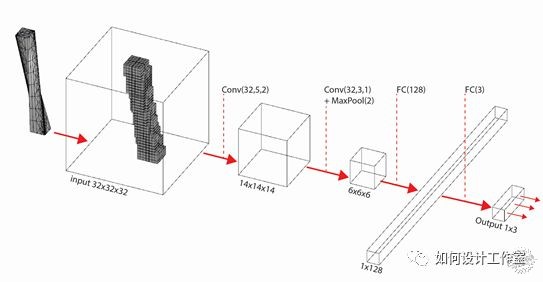
Figure 2-2-3. The architecture of the 3D CNN used for qualitative assessment by (Newton 2018).
二、GAN
除了CNN之外,生成对抗网络(GAN)是另一种图像数据处理的机器学习网络。 在网络结构中,输入和输出都是图像数据,因此GAN通常用于生成设计。
(Huang and Zheng 2018)(好吧就是本文作者。。。)使用GAN来寻找人工标记过的公寓平面图与真实图纸之间的关系。从标签到平面的映射展示了神经网络的设计生成能力,而从平面到标签的映射展示了设计识别能力(图3-2-1)。然而训练数据集仅包含100张图像,输入和输出数据的收集和标记还存在很大的人力困难,所以由于输出图像中仍存在模糊区域。缺乏训练数据,亦或是平面图本身的设计规则的多样性导致结果其实并不那么令人满意。
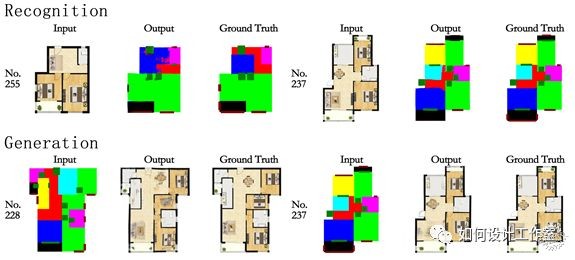
Figure 3-2-1. Architectural Drawings Recognition and Generation through Machine Learning by (Huang and Zheng 2018).
当然,GAN也有与机械臂相关的应用。(Rossi and Nicholas 2018)应用GAN来学习机械臂的工作路径和弯曲金属板的形态之间的关系。其中RGB值表示金属板表面上每个控制点的坐标。首先使用机械臂根据不同的路径来弯曲金属板,然后将这套数据用于训练GAN,训练后的网络可以用于生成机械臂工作路径以达到特定的弯曲效果,或者反过来根据给定的机械臂的路径预测可能的弯曲效果(图3-2-2)。
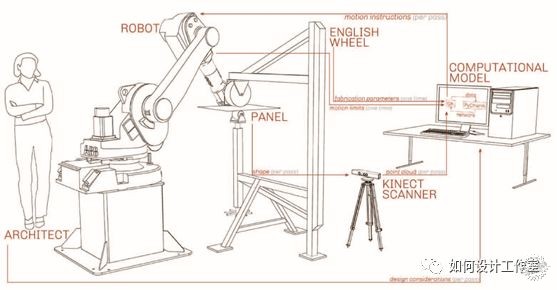
Figure 3-2-2. Cyber-physical setup for Robotic English Wheeling, creating a link between physical making, digital representation, and neuralnetwork training by (Rossi and Nicholas 2018).
三、ANN
人工神经网络(ANN)是几乎所有神经网络的起源,它将数据视为单纯的向量或实数。因此,当应用于建筑设计时,它不能像CNN或GAN那样直接带来可视化的效果。但实际上计算机本身就是将数据储存为实数,图像只是矩阵的可视化表达,所以图像的渲染仅对人类更容易理解。因此,使用适当的数据结构来转译和概括一个设计,然后使用ANN来学习和生成设计,通常是一种更有效,更准确的方法。
(DANHAIVE and MUELLER 2018)将ANN应用于预测3D形态。通过输入16个形态控制点,网络将返回生成的结果,其中包含64个移位点(图4-2-1)。 这篇论文是一个很好的案例,将设计数据转换为向量。使用线性回归最为算法核心,随机森林作为激活函数的模板,并将归一化均方根误差(NRMSE)设置为损失函数。网络结构包含具有16个神经元的输入数据和具有172个神经元的输出数据,通过该数据可以在建模软件中重建曲面。
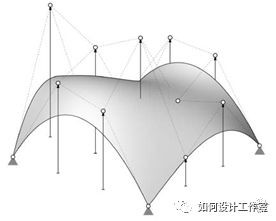
Figure 4-2-1. The geometry is described by 16 control points whose position can be continuously varied between 0 and 10. By (DANHAIVE and MUELLER 2018).
(Sjoberg, Beorkrem, and Ellinger 2017)将建筑师对设计的偏好结合到ANN的训练中,理解用户的设计偏好然后从随机生成的数据中自动选择更好的设计。对于每个训练循环,系统将根据不同的参数生成16种形式,例如每个组块的位置,然后要求设计者选择最佳的3个模型,并将它们打分为1,0.66,和0.33。然后,网络将根据设计师的分数进行训练,并自动评估下一批生成的方案,以选择最佳结果(图4-2-2)。相比传统的遗传算法或模拟退火,通过设计者给出的规则来评估数据,使用ANN的优化模式只关心评估的结果,而不是评估标准。通过从原因到结果的学习,神经网络能确定隐藏在设计者选择背后的设计规则。设计师可能很难说出评估一个设计的具体策略,但更容易说出哪个设计更好,哪个设计不好。因此,使用神经网络来学习设计策略,也将会是本文作者之后的主要研究方向。
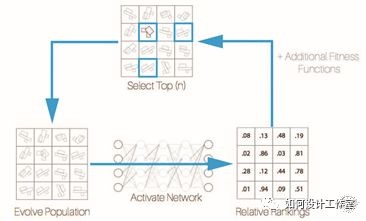
Figure 4-2-2. Search logic diagram showing the cycle of population evolution and scoring by (Sjoberg, Beorkrem, and Ellinger 2017).
此外,当然少不了ANN与机械臂的结合。(Brugnaro and Hanna 2018)开发了一种独特的ANN,用于从人类木匠那里学习木材加工的知识,然后为机械臂生成工作路径来模拟加工木材的过程,模拟人造工艺(图4-2-4)。这种基于人类知识的机器学习来生成工作路径的方法比直接观察和模拟更有说服力。
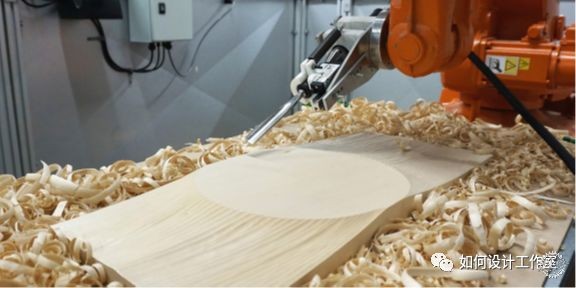
Figure 4-2-4. In the robotic fabrication stage, the trained network is used to inform the robotic toolpath. By (Brugnaro and Hanna 2018).
4、RNN
上面介绍的三个网络,CNN,GAN和ANN,都需要固定数量的输入和输出神经元。如果输入或输出数据的长度发生变化,则需要将数据填充到相同的长度,或者应该使用循环神经网络(RNN)。尤其是当数据按顺序排列的情况下。所以RNN最初是为语言处理而开发的。
只有少数研究侧重于RNN的应用。比如(Luo, Wang, and Xu 2018)将LSTM网络应用于学习弯曲橡胶棒的材料特性(图5-2-1)。输入的数据是弯曲杆中80个均匀分布的点和初始材料的高度,输出的数据是每个对应点的材料厚度。对于训练后的网络,用户可以输入任意曲线,并获得未弯曲橡胶棒的形状作为反馈。 然后用户可以用输出的数据切割橡胶并根据曲率固定起点和终点,然后材料会在自身内力的作用下弯曲成输入的曲线形状。在这里使用RNN是非常合理的,因为弹性材料的棒状弯曲形式可以被重建为一系列点坐标,它们的顺序适合RNN的框架。此外,为了获得训练数据,研究者还使用两台机械臂精确弯曲材料,确保训练的精确性。
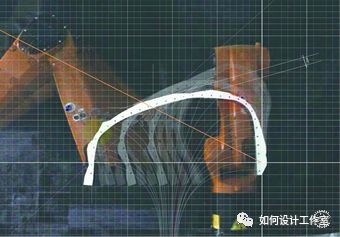
Figure 5-2-1. Non-Uniform Elastomer Material Behaving under Bending by (Luo, Wang, and Xu 2018).
五、聚类
之前提到的所有四种类型的神经网络都具有非常清晰的输入和输出数据,因此我们需要给定训练集来告诉网络输入和输出之间的对应关系。我们将四个网络称为监督学习。然而,除了监督学习之外,还有一些算法可以解决特定问题,这些算法中有些不需要带有标签的数据支持学习,我们将其称为无监督学习。它们通常将输入数据聚类为几个类别,以达到标记类似的数据的作用。
(Yetiş et al. 2018)使用了K-Nearest Neighbors(KNN),一种类似于K-Means的聚类算法,用于从未标记的3D模型中对建筑元素(如柱子和墙壁)进行分类,为建筑师标记混乱的模型文件提供了一种便捷的方式。但与K-Means Clustering不同,KNN需要从标记数据进行训练。 因此,作者随机生成了建筑元素,并将数据输入KNN来训练神经网络。 然后通过输入一个未标记的模型,KNN将对模型中的不同元素进行分类(图6-2-1)。

Figure 6-2-1. Categorized elements from the control set by (Yetiş et al. 2018).
另一方面是分析社会行为数据。(Yin et al. 2018)将K-Means聚类应用于分类参观者在展览空间中的停留点。 首先使用UWB跟踪记录每个访客的位置,然后将数据输入给K-Means Clustering,分为五组,找到停留位置的中心(图6-2-2)。聚类显示了访客观看展品的首选位置,这有助于改变展览空间的布局来改善用户体验。

Figure 6-2-2. The behaviorperformance interface by (Yin et al. 2018).
六、未来研究展望
除了已经在建筑设计中应用机器学习的上述案例外,本文还对其他论文进行简要检索,介绍一些在下一步的工作中提到机器学习的论文,来展望未来的研究方向。
(Savov and Tessmann 2017)开发了一种体素形态语法,用于根据用户的操作生成类似立方体的模型数据(图7-1-1),未来的研究方向之一是通过机器学习来研究用户的设计倾向,生成特定的设计。 立方体和结构化数据之间的转换非常简单,因为立方体块本身就可以用一系列参数表示,例如中心点和边长,因此ANN是非常喜欢这类数据集的。

Figure 7-1-1. Generation of a voxel shape using the playable voxel-shape grammar by (Savov and Tessmann 2017).
(Berry and Park 2017)希望将机器学习用于属性关联和分类,对收集到的室内空间利用率数据进行分类(图7-2-1)。类似于(Hu and Park 2017)和(Yin et al. 2018)的研究,收集数据后的下一步是通过合适的分析算法将其转化为令人信服的结论。 因此,擅长处理大数据的机器学习将是最好的选择。
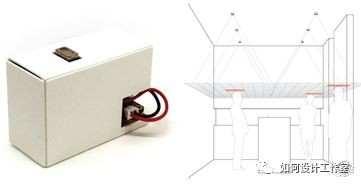
Figure 7-2-1. Left: Device prototype. Right: Proposed device configuration for indoor spaces. By (Berry and Park 2017).
(Soler, Retsin, and Garcia 2017)希望应用基于图像的神经网络来校准和发现机械臂打印系统中的错误,方法是将机械臂上连接的相机拍摄的照片作为输入数据。(Bard, Bidgoli, and Chi 2018)已经完成了类似的工作,但是由于在这篇文章中提到的3D打印存在许多交错的线性工作路径,因此包含太多像素变化的图像可能难以实现高精度的反馈(图7-3-1)。
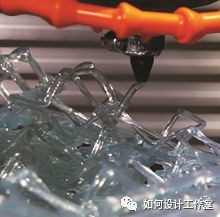
Figure 7-3-1. Spatial extrusion process by (Soler, Retsin, and Garcia 2017).
结论,机器学习已成为建筑设计中一个新兴的领域。 只要有数据,机器学习就可以用来找到它背后的法律和规则,并根据学习进一步产生类似的数据。从技术上讲,要将机器学习应用于建筑设计,可以遵循以下步骤:
1)挖掘数据并使用清晰的数据结构对其进行转换;
2)寻找适用的神经网络类型;
3)调整网络设置;
4)训练网络并重复3)直到结果满意为止;
5)将训练后的网络应用于识别或生成其他任务。
然而,除了技术层面,在AI的高速发展下,一些讨论涌现了出来,例如“人工智能可以取代人类并成为新的建筑师吗?”“如果是的话,人类建筑师的未来会如何?”
首先,维特鲁威在他的《建筑十书》中是这样描述建筑师的:
“He (architect) should be a man of letters, a skilfuldraughtsman, a mathematician, familiar with scientific inquiries, a diligentstudent of philosophy, acquainted with music; not ignorant of medicine, learnedin the responses of jurisconsults, familiar with astronomy and astronomicalcalculations.”
要成为一名建筑师,掌握一门知识是远远不够的。 但是上面介绍的每个案例都使用单一类型的算法解决了问题的一个方面。 所以现在,至少就目前而言,AI只能被称为工具集合,来帮助建筑师分别解决具体问题。
柯布西耶在《精确性》中写到:
“To be an engineer is to analyze and to applycalculation; a builder makes a synthesis.”
建筑师和工程师的区别在于,建筑师能够掌握各个领域的知识,并综合起来找到涵盖所有情况的解决方案。 建筑师知道如何跳出特定的问题,并找出适用于每个问题的解决方法。
所以我对这类讨论的看法是,如果我们继续训练AI,不仅是解决单一问题的方案,而是找到解决问题的方案的方法,那么人工智能将不仅取代建筑师,甚至可能取代全人类吧。
关于作者:
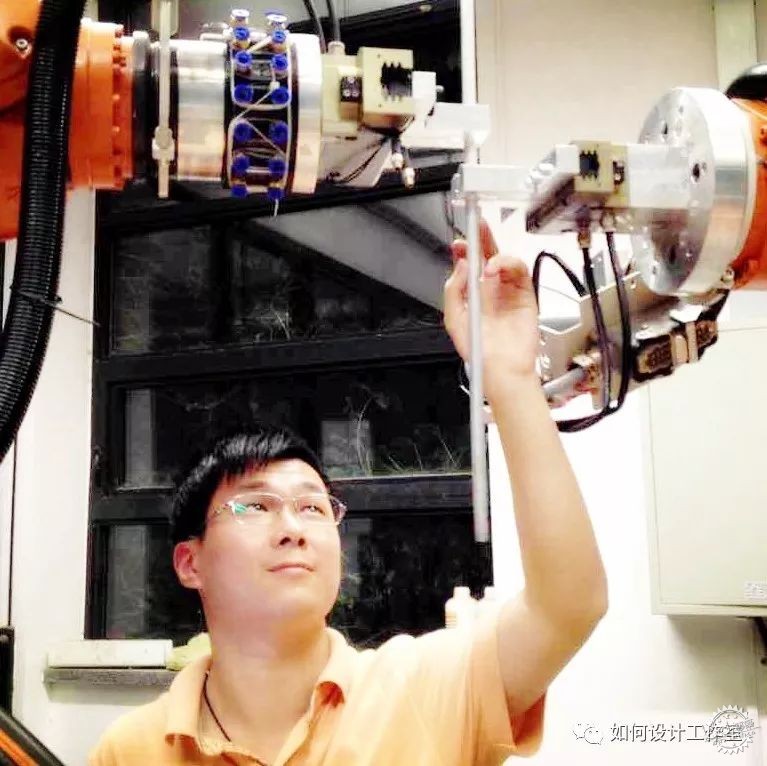
郑豪,宾夕法尼亚大学设计学院博士生,程序和设计研究者,专攻机器学习,机械臂技术,混合现实技术,生成式设计。他毕业于加州大学伯克利分校(UCB),在Simon Schleicher教授的指导下获得建筑学硕士学位,本科毕业于上海交通大学,在刘士兴教授的引导下获得建筑学学士学位。他曾工作于清华大学,先后于徐卫国工作室研究机械臂辅助施工,并于黄蔚欣工作室研究机器学习。他还曾在加州大学伯克利分校担任研究助理,和Maria Paz Gutierrez教授研究仿生材料3D打印,和Kyle Steinfeld教授研究人工智能。
Hao Zheng is currently an incoming Ph.D. student at the University of Pennsylvania, School of Design. He is a programmer and design researcher, specializing in machine learning, robotic technology, mixed reality, and generative design. He holds a Master of Architecture degree from the University of California, Berkeley, advised by Prof. Simon Schleicher, and a Bachelor of Architecture degree from Shanghai Jiao Tong University, advised by Prof. Shixing Liu. Before joining UPenn, Hao worked as a research assistant at Tsinghua University with a concentration on the robotic assembly under the supervision of Prof. Weiguo Xu and machine learning under the supervision of Prof. Weixin Huang. In addition, he worked as a researcher assistant at UC Berkeley, researching bio-material 3D printing supervised by Prof. Maria Paz Gutierrez and machine learning supervised by Prof. Kyle Steinfeld.
参考文献:
Achlioptas, Panos, Olga Diamanti, Ioannis Mitliagkas, and Leonidas Guibas. 2018. "Learning Representations and Generative Models for 3D Point Clouds."
Anzalone, Phillip, Stephanie Bayard, and Ralph S. Steenblik. 2017. "Rapidly Deployed and Assembled Tensegrity System." Proceedings of the 37th Annual Conference of the Association for Computer Aided Design in Architecture, Boston, United States.
Bard, Joshua, Ardavan Bidgoli, and Wei Wei Chi. 2018. "Image Classification for Robotic Plastering with Convolutional Neural Network." Robotic Fabrication in Architecture, Art and Design 2018, Zurich, Switzerland.
Berry, Jaclyn, and Kat Park. 2017. "A Passive System for Quantifying Indoor Space Utilization." Proceedings of the 37th Annual Conference of the Association for Computer Aided Design in Architecture, Boston, United States.
Bidgoli, Ardavan, and Pedro Veloso. 2018. "DeepCloud. The application of a data-driven, generative model in design." Proceedings of the 38th Annual Conference of the Association for Computer Aided Design in Architecture, Mexico City, Mexico.
Brugnaro, Giulio, and Sean Hanna. 2018. "Adaptive Robotic Carving - Training Methods for the Integration of Material Performances in Timber Manufacturing." Robotic Fabrication in Architecture, Art and Design 2018, Zurich, Switzerland.
Byrne, Ultan. 2017. "Point-Cloud-Paint." Proceedings of the 37th Annual Conference of the Association for Computer Aided Design in Architecture, Boston, United States.
Carpo, Mario. 2017. The Second Digital Turn: Design Beyond Intelligence: MIT Press.
Chang, Mei-Chih, Peter Buš, Ayça Tartar, Artem Chirkin, and Gerhard Schmitt. 2018. "Big-Data Informed Citizen Participatory Urban Identity Design." Proceedings of the 36th International Conference on Education and Research in Computer Aided Architectural Design in Europe, Łódź, Poland.
Chung, Chia-Chun, and Tay-Sheng Jeng. 2018. "Information Extraction Methodology by Web Scraping for Smart Cities: Opportunity Sensing to Train the Air Quality Monitor in Smart Cities." Proceedings of the 23rd International Conference on Computer-Aided Architectural Design Research in Asia, Beijing, China.
Cutellic, Pierre. 2018. "UCHRON - An Event-Based Generative Design Software Implementing Fast Discriminative Cognitive Responses from Visual ERP BCI." Proceedings of the 36th International Conference on Education and Research in Computer Aided Architectural Design in Europe, Łódź, Poland.
Danesh, Foroozan, Ali Baghi, and Saleh Kalantari. 2018. "Programmable Paper Cutting." Proceedings of the 36th International Conference on Education and Research in Computer Aided Architectural Design in Europe, Łódź, Poland.
DANHAIVE, Renaud, and Caitlin MUELLER. 2018. "Structural Metamodelling of Shells." Proceedings of the IASS Symposium 2018, Boston, United States.
FUHRIMANN, Lukas, Vahid MOOSAVI, Patrick Ole OHLBROCK, and Pierluigi D’ACUNTO. 2018. "Data-Driven Design: Exploring new Structural Forms using Machine Learning and Graphic Statics." Proceedings of the IASS Symposium 2018, Boston, United States.
Goodfellow, Ian, Jean Pouget-Abadie, Mehdi Mirza, Bing Xu, David Warde-Farley, Sherjil Ozair, Aaron Courville, and Yoshua Bengio. 2014. "Generative adversarial nets." Advances in neural information processing systems.
Hopfield, John J. 1982. "Neural networks and physical systems with emergent collective computational abilities." Proceedings of the national academy of sciences 79 (8):2554-2558.
Hu, Zhengrong, and Ju Hong Park. 2017. "HalO - Indoor Positioning Mobile Platform." Proceedings of the 37th Annual Conference of the Association for Computer Aided Design in Architecture, Boston, United States.
Huang, Weixin, and Hao Zheng. 2018. "Architectural Drawings Recognition and Generation through Machine Learning." Proceedings of the 38th Annual Conference of the Association for Computer Aided Design in Architecture, Mexico City, Mexico.
Im, Hyeonji Claire, Sulaiman AlOthman, and Jose Luis García del Castillo. 2018. "Responsive Spatial Print - Clay 3D printing of spatial lattices using real-time model recalibration." Proceedings of the 38th Annual Conference of the Association for Computer Aided Design in Architecture, Mexico City, Mexico.
Ivakhnenko, Alekseĭ Grigorʹevich, and Valentin Grigorévich Lapa. 1966. Cybernetic predicting devices. PURDUE UNIV LAFAYETTE IND SCHOOL OF ELECTRICAL ENGINEERING.
Khean, Nariddh, Lucas Kim, Jorge Martinez, Ben Doherty, Alessandra Fabbri, Nicole Gardner, and M. Hank Haeusler. 2018. "The Introspection of Deep Neural Networks - Towards Illuminating the Black Box: Training Architects Machine Learning via Grasshopper Definitions." Proceedings of the 23rd International Conference on Computer-Aided Architectural Design Research in Asia, Beijing, China.
Kim, Eonyong. 2018. "Field Survey System for Facility Management Using BIM Model: IoT Management for Facility Management." Proceedings of the 23rd International Conference on Computer-Aided Architectural Design Research in Asia, Beijing, China.
Kim, Jin Sung, Jae Yeol Song, and Jin Kook Lee. 2018. "Approach to the Extraction of Design Features of Interior Design Elements Using Image Recognition Technique." Proceedings of the 23rd International Conference on Computer-Aided Architectural Design Research in Asia, Beijing, China.
Koehler, Daniel, Sheghaf Abo Saleh, Hua Li, Chuwei Ye, Yaonaijia Zhou, and Rasa Navasaityte. 2018. "Mereologies - Combinatorial Design and the Description of Urban Form." Proceedings of the 36th International Conference on Education and Research in Computer Aided Architectural Design in Europe, Łódź, Poland.
Kvochick, Tyler. 2018. "Sneaky Spatial Segmentation. Reading architectural drawings with Deep neural networks and without labeling data." Proceedings of the 38th Annual Conference of the Association for Computer Aided Design in Architecture, Mexico City, Mexico.
Le Corbusier. 1930. Precisions on the present state of architecture and city planning. edited by Tim Benton.
LeCun, Yann, and Yoshua Bengio. 1995. "Convolutional networks for images, speech, and time series." The handbook of brain theory and neural networks 3361 (10):1995.
LeCun, Yann, Léon Bottou, Yoshua Bengio, and Patrick Haffner. 1998. "Gradient-based learning applied to document recognition." Proceedings of the IEEE 86 (11):2278-2324.
Lim, Joie, Patrick Janssen, and Rudi Stouffs. 2018. "Automated Generation of BIM Models from 2D CAD Drawings." Proceedings of the 23rd International Conference on Computer-Aided Architectural Design Research in Asia, Beijing, China.
Lin, Yuming, and Weixin Huang. 2017. "Behavior Analysis and Individual Labeling Using Data from Wi-Fi IPS." Proceedings of the 37th Annual Conference of the Association for Computer Aided Design in Architecture, Boston, United States.
Lin, Yuming, and Weixin Huang. 2018. "Social Behavior Analysis in Innovation Incubator Based on Wi-Fi Data: A Case Study on Yan Jing Lane Community." Proceedings of the 23rd International Conference on Computer-Aided Architectural Design Research in Asia, Beijing, China.
Liu, Chang, Xu Zhang, and Takehiko Nagakura. 2018. "PanoFrame: A Lightweight Panoramic Video Editing Tool for Storytelling with Spatial Content." Proceedings of the 23rd International Conference on Computer-Aided Architectural Design Research in Asia, Beijing, China.
Luo, Dan, Jinsong Wang, and Weiguo Xu. 2018. "Robotic Automatic Generation of Performance Model for Non-Uniform Limear Material via Deep Learning." Proceedings of the 23rd International Conference on Computer-Aided Architectural Design Research in Asia, Beijing, China.
McCulloch, Warren S, and Walter Pitts. 1943. "A logical calculus of the ideas immanent in nervous activity." The bulletin of mathematical biophysics 5 (4):115-133.
Newton, David. 2018. "Multi-Objective Qualitative Optimization (MOQO) in Architectural Design." Proceedings of the 36th International Conference on Education and Research in Computer Aided Architectural Design in Europe, Łódź, Poland.
Peng, Wenzhe, Fan Zhang, and Takehiko Nagakura. 2017. "Machines’ Perception of Space: Employing 3D Isovist Methods and a Convolutional Neural Network in Architectural Space Classification." Proceedings of the 37th Annual Conference of the Association for Computer Aided Design in Architecture, Boston, United States.
Pollio., Vitruvius. 1931. Vitruvius On architecture. edited by Frank Stephen Granger. London: W. Heinemann, ltd.;.
Redmon, Joseph, Santosh Divvala, Ross Girshick, and Ali Farhadi. 2016. "You only look once: Unified, real-time object detection." Proceedings of the IEEE conference on computer vision and pattern recognition.
Rossi, Gabriella, and Paul Nicholas. 2018. "Re/Learning the Wheel. Methods to utilize neural networks as design tools for doubly curved metal surfaces." Proceedings of the 38th Annual Conference of the Association for Computer Aided Design in Architecture, Mexico City, Mexico.
Samuel, Arthur L. 1959. "Some studies in machine learning using the game of checkers." IBM Journal of research and development 3 (3):210-229.
Savov, Anton, and Oliver Tessmann. 2017. "Introduction to Playable Voxel-Shape Grammars." Proceedings of the 37th Annual Conference of the Association for Computer Aided Design in Architecture, Boston, United States.
Scotto, Fabio, Ena Lloret Fritschi, Fabio Gramazio, Matthias Kohler, and Robert J. Flatt. 2018. "Adaptive Control System For Smart Dynamic Casting: Defining Fabrication-Informed Design Tools And Process Parameters In Digital Fabrication Processes." Proceedings of the 23rd International Conference on Computer-Aided Architectural Design Research in Asia, Beijing, China.
Seibold, Zach, Kevin Hinz, Jose Luis García del Castillo y López, Nono Martínez Alonso, Saurabh Mhatre, and Martin Bechthold. 2018. "Ceramic Morphologies - Precision and control in paste-based additive manufacturing." Proceedings of the 38th Annual Conference of the Association for Computer Aided Design in Architecture, Mexico City, Mexico.
Sjoberg, Christian, Christopher Beorkrem, and Jefferson Ellinger. 2017. "Emergent Syntax." Proceedings of the 37th Annual Conference of the Association for Computer Aided Design in Architecture, Boston, United States.
Soler, Vicente, Gilles Retsin, and Manuel Jimenez Garcia. 2017. "A Generalized Approach to Non-Layered Fused Filament Fabrication." Proceedings of the 37th Annual Conference of the Association for Computer Aided Design in Architecture, Boston, United States.
Song, Jaeyeol, Jinsung Kim, Hayan Kim, Jungsik Choi, and Jin-Kook Lee. 2018. "Approach to Capturing Design Requirements from the Existing Architectural Documents Using Natural Language Processing Technique." Proceedings of the 23rd International Conference on Computer-Aided Architectural Design Research in Asia, Beijing, China.
Steinfeld, Kyle. 2017. "Dreams May Come." Proceedings of the 37th Annual Conference of the Association for Computer Aided Design in Architecture, Boston, United States.
WANG, Margaret, Emil POULSEN, Dan REYNOLDS, and Robert OTANI. 2018. "Conceptual stage predictive and collaborative design using machine learning." Proceedings of the IASS Symposium 2018, Boston, United States.
WANG, Pujin, and Ken'ichi KAWAGUCHI. 2018. "Application of Deep Learning with Convolutional Neural Networks to Detect Damages of Ceilings in Large Rooms." Proceedings of the IASS Symposium 2018, Boston, United States.
Wang, Ting-Chun, Ming-Yu Liu, Jun-Yan Zhu, Andrew Tao, Jan Kautz, and Bryan Catanzaro. 2017. "High-Resolution Image Synthesis and Semantic Manipulation with Conditional GANs." arXiv preprint arXiv:1711.11585.
Werbos, Paul. 1974. "Beyond regression: new fools for prediction and analysis in the behavioral sciences." PhD thesis, Harvard University.
Xu, Tongda, Dinglu Wang, Mingyan Yang, Xiaohui You, and Weixin Huang. 2018. "An Evolving Built Environment Prototype: A Prototype of Adaptive Built Environment Interacting with Electroencephalogram Supported by Reinforcement Learning." Proceedings of the 23rd International Conference on Computer-Aided Architectural Design Research in Asia, Beijing, China.
Yetiş, Gizem, Ozan Yetkin, Kongpyung Moon, and Özkan Kılıç. 2018. "A Novel Approach for Classification of Structural Elements in a 3D Model by Supervised Learning." Proceedings of the 36th International Conference on Education and Research in Computer Aided Architectural Design in Europe, Łódź, Poland.
Yin, Hao, Zhe Guo, Yao Zhao, and Philip F. Yuan. 2018. "Behavior Visualization System Based on UWB Positioning Technology." Proceedings of the 38th Annual Conference of the Association for Computer Aided Design in Architecture, Mexico City, Mexico.
Zhang, Yan, Arnaud Grignard, Alexander Aubuchon, and Kevin Lyons; Kent Larson. 2018. "Machine Learning for Real-Time Urban Metrics and Design Recommendations." Proceedings of the 38th Annual Conference of the Association for Computer Aided Design in Architecture, Mexico City, Mexico.
Zheng, Hao. 2018. "Drawing with Bots Human-computer Collaborative Drawing Experiments." Proceedings of the 23rd International Conference on Computer-Aided Architectural Design Research in Asia, Beijing, China.
Zheng, Hao, and Weixin Huang. 2018. "Understanding and Visualizing Generative Adversarial Network in Architectural Drawings." Proceedings of the 23rd International Conference on Computer-Aided Architectural Design Research in Asia, Beijing, China.
|
|
